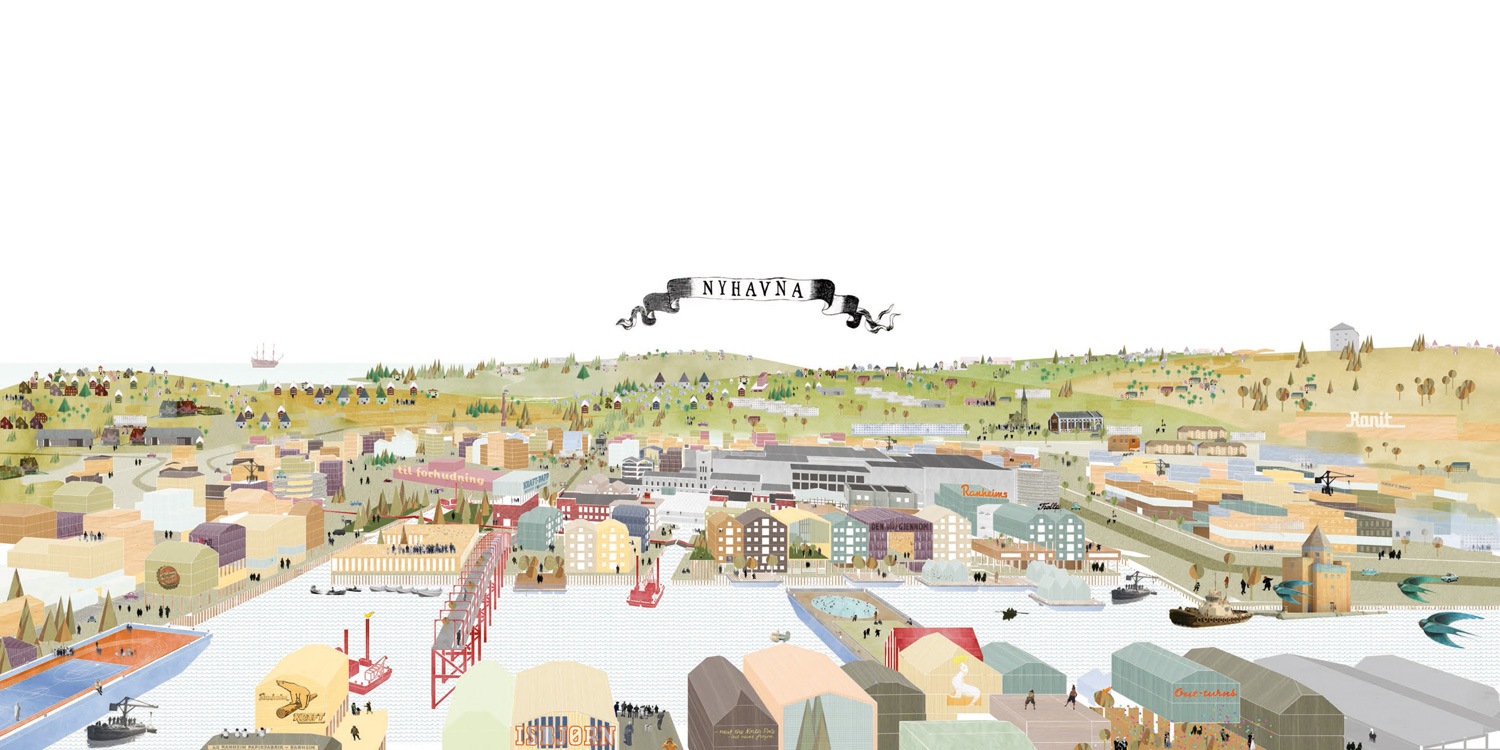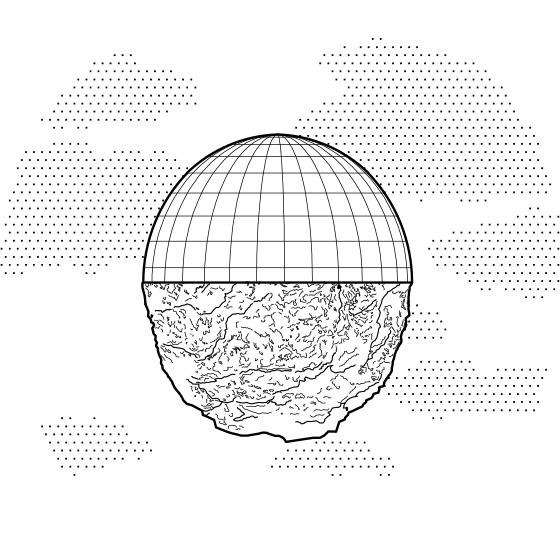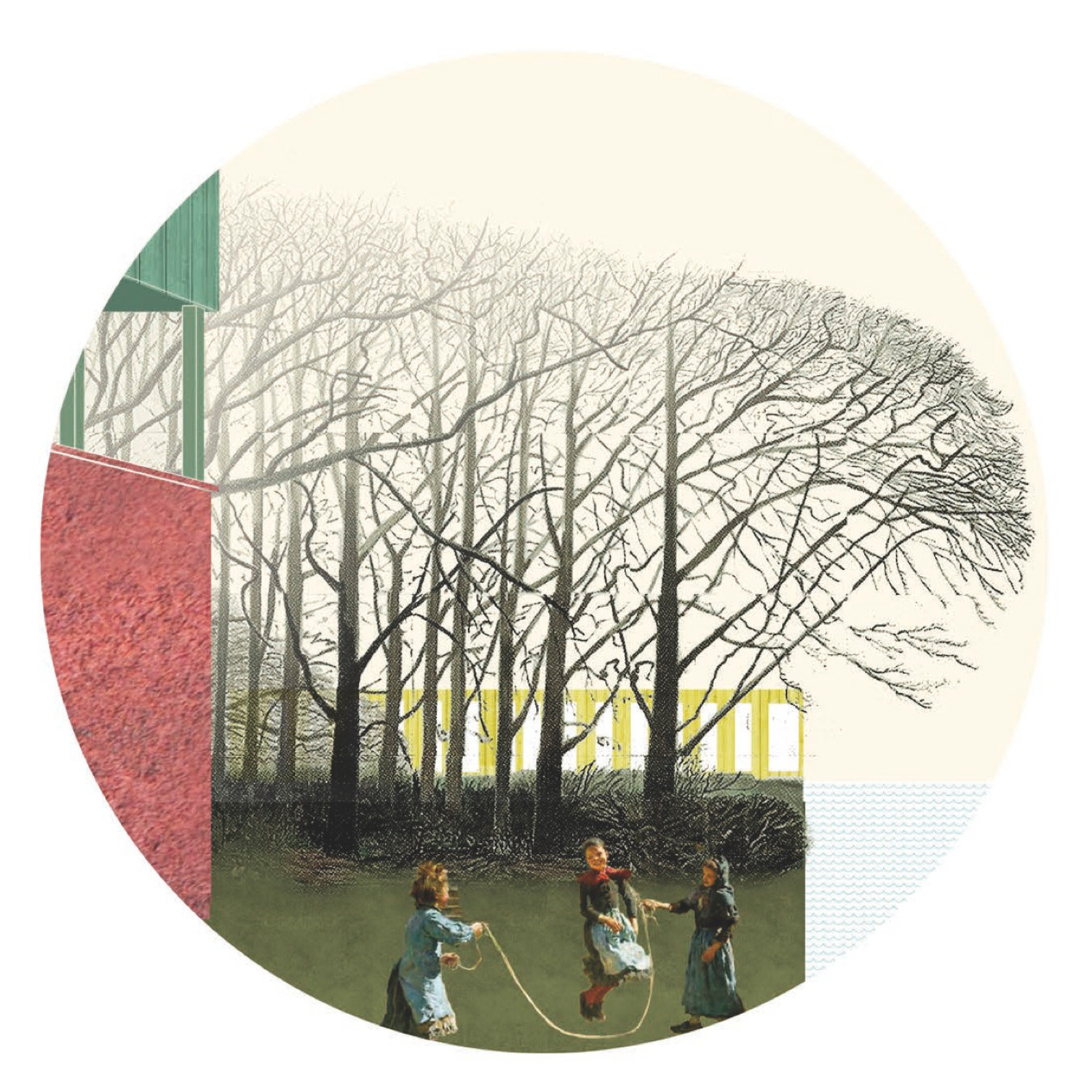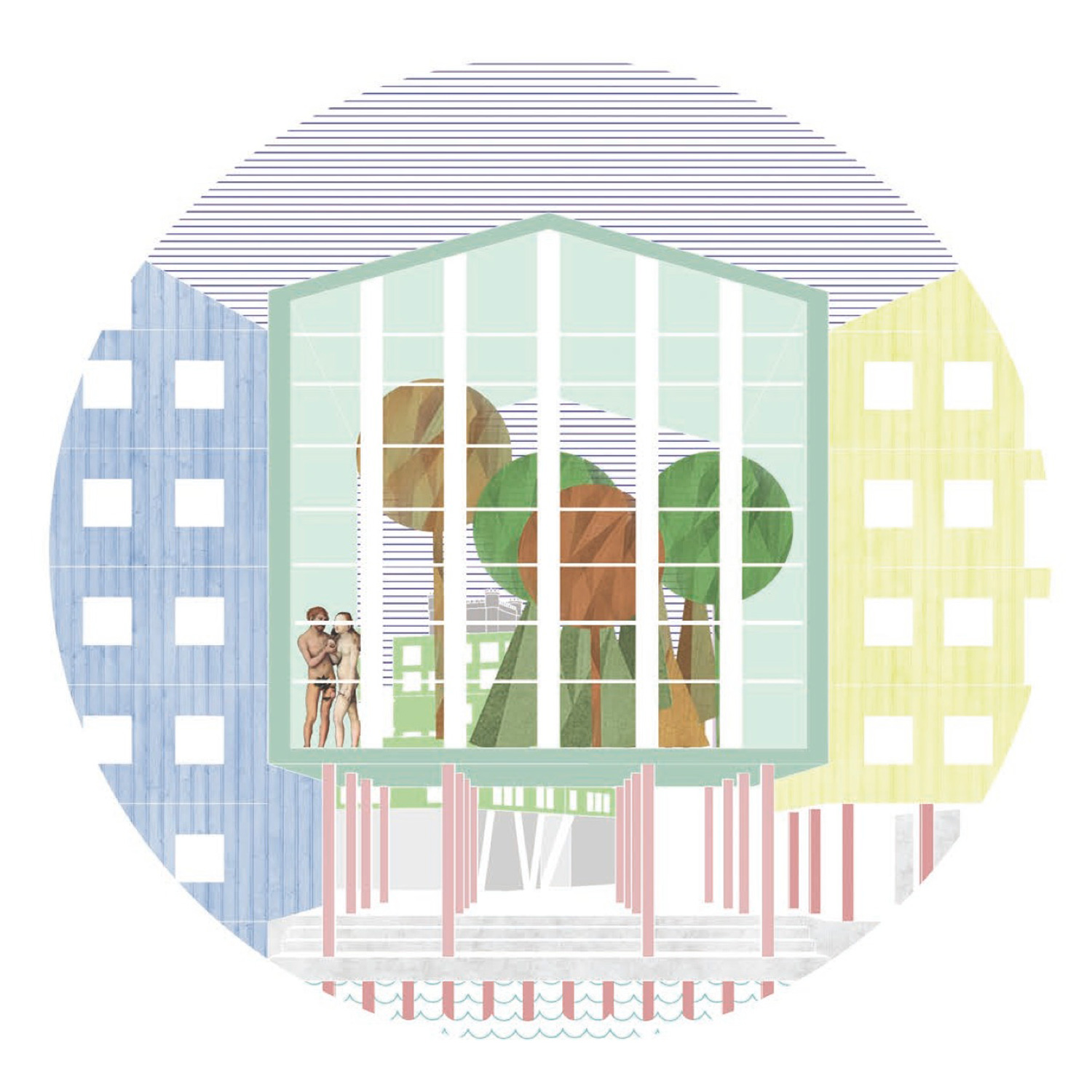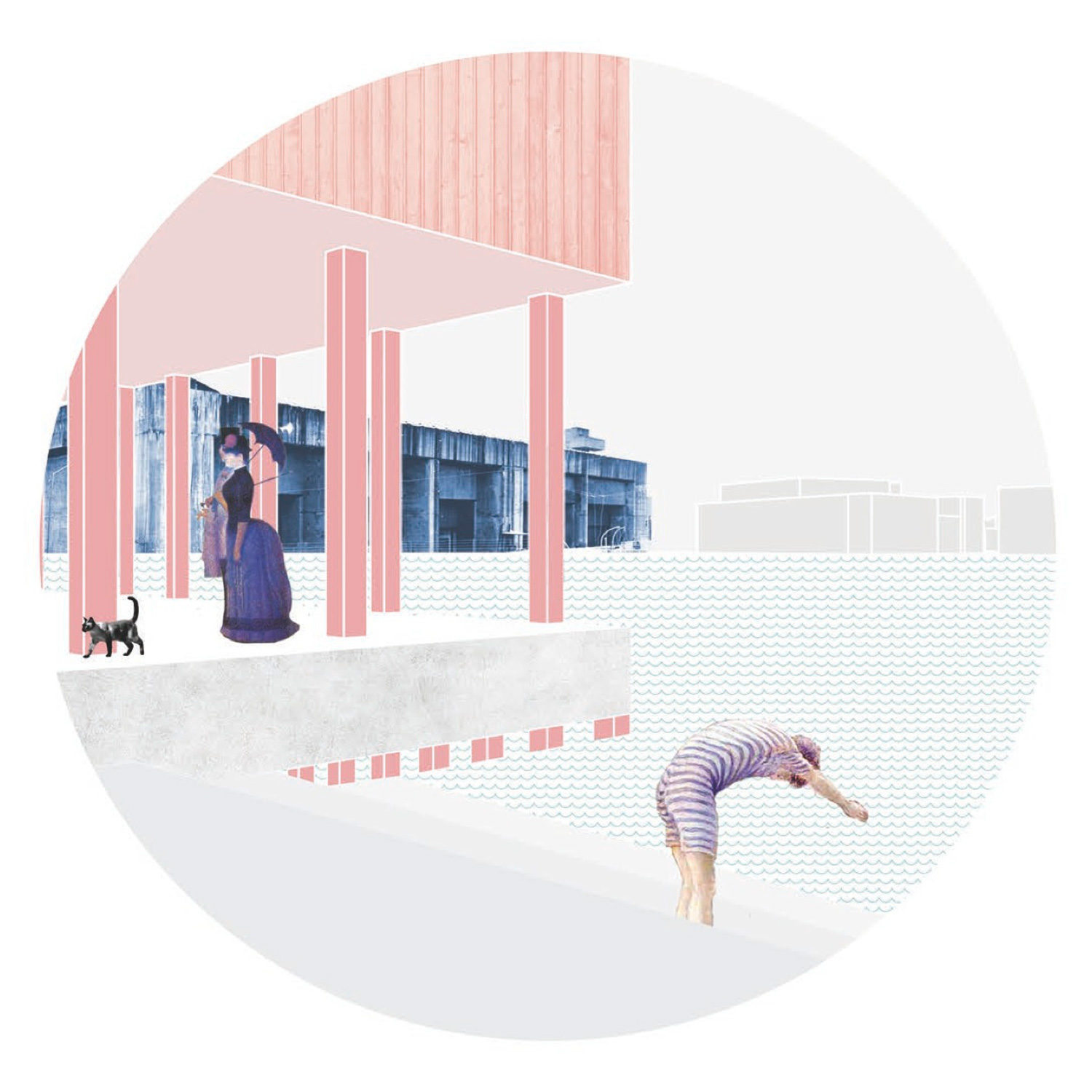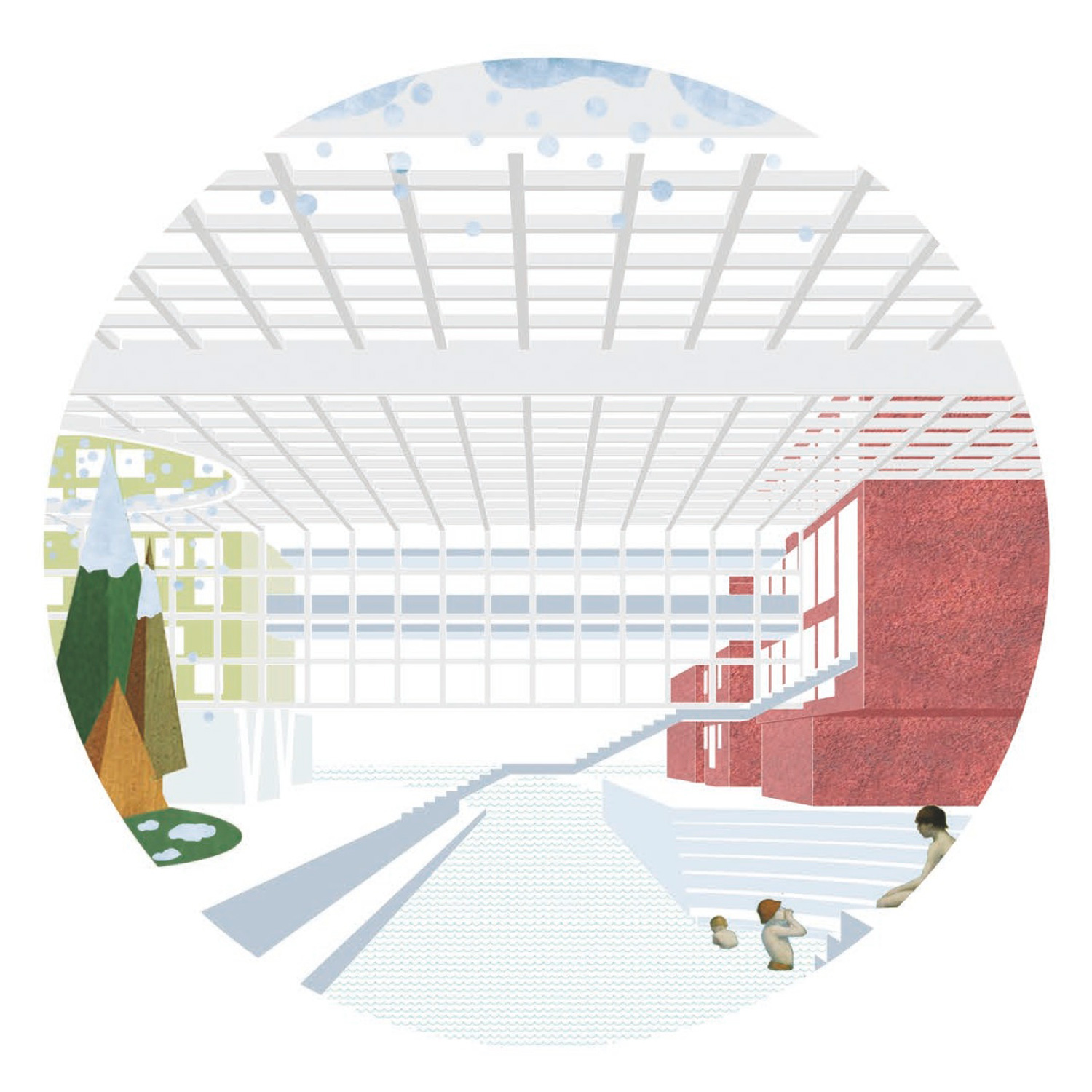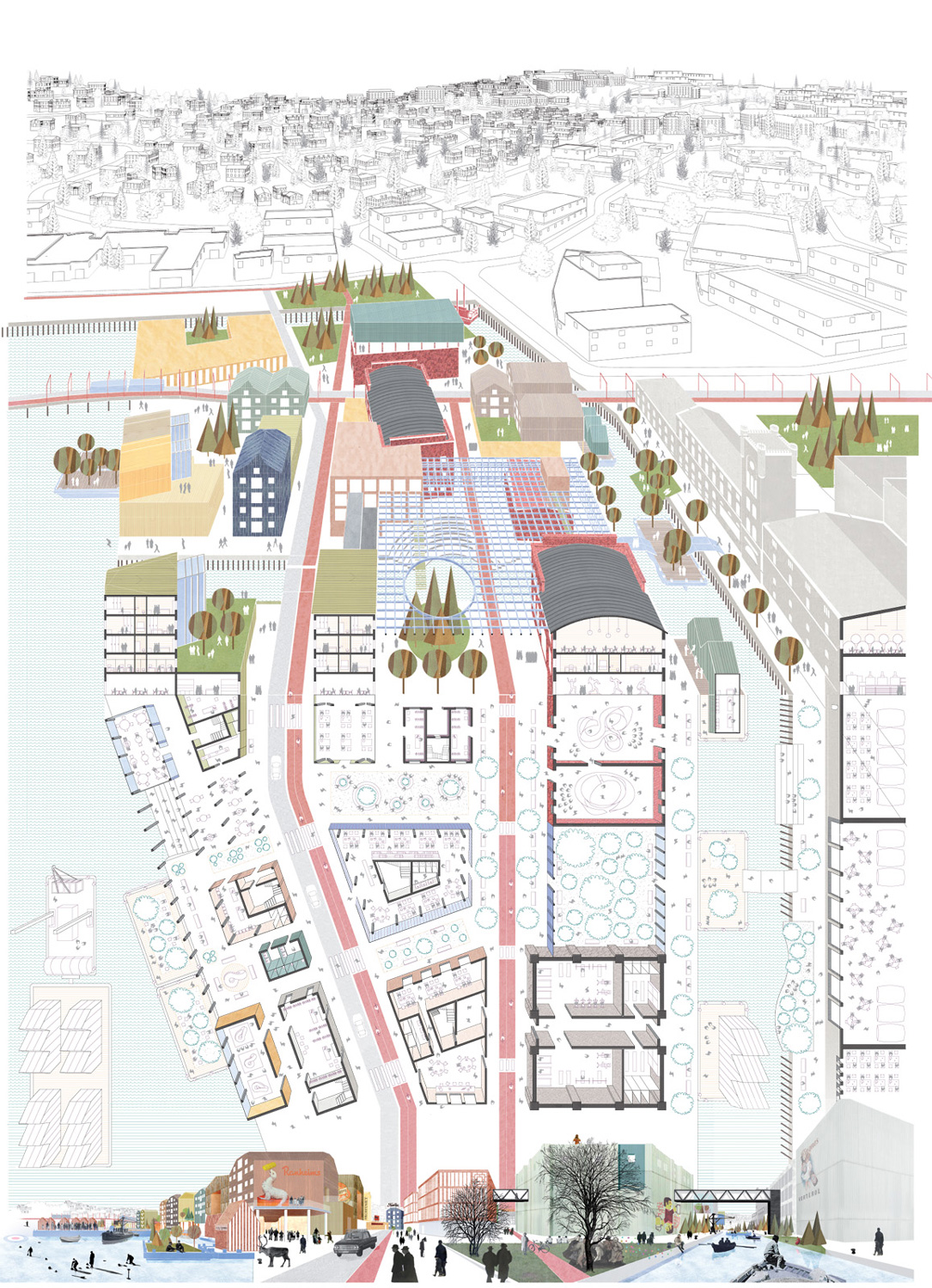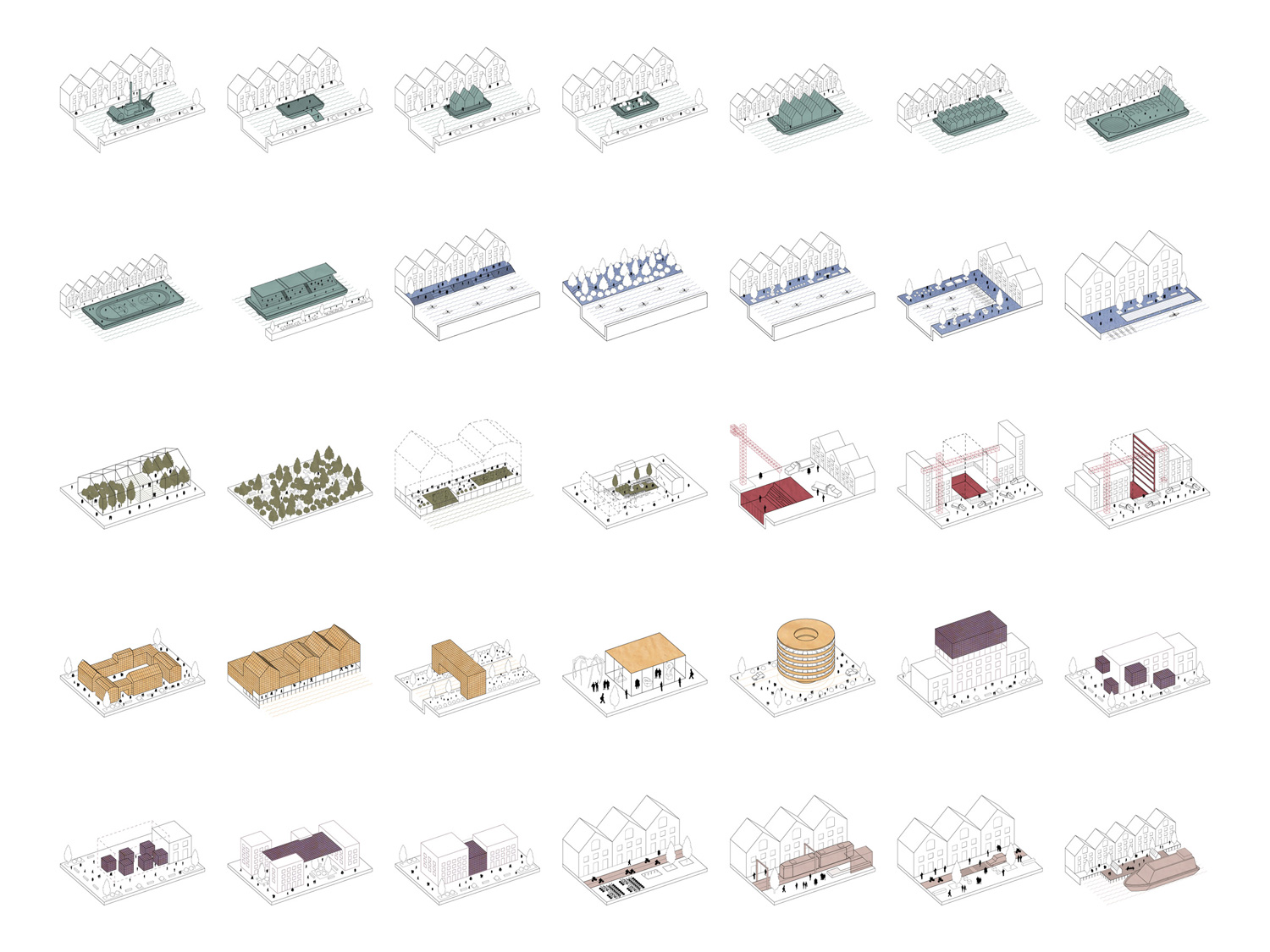☉ Europan 13 : Trondheim is a proposal by False Mirror Office for Europan in 2015. It is located in Trondheim Norway in a seaside and urban setting. Its scale is extralarge with a surface of 6.000 sqm. Review the 3 proposals for the same competition.
Europan addresses again the matter of adaptability, temporaryness and sustainability to the ever-changing condition of cities.
In a context where such acclaimed concepts are no longer a conscious attitude, but a dogmatic precept, the false mirror internalizes such premises facing the enslavement to this belief and questions the foundation of this trend: to what extent can the use of standardized, repetitive and adaptable elements represent a solution for a whatever city without losing the identity of that city itself?
Europan 13 turns into the perfect playground to experiment an innovative approach where the obsolete slogan “from local question to global solution” naturally switches to a more appropriate “from global requests to specific solution”.
Trondheim’s district of Nyhavna is the testing ground where playing out our personal declination of the adaptable, through an approach which combines a new waterfront, the existent heritage, the renovation of an industrial district and the presence of cultural actors.
Looking at this miscellaneous context, the false mirror launches an inedited process in which combining the reinterpretation of four local archetypes:
– The typological reinterpretation of the warehouses,
– The canalization of the whole neighbourhood,
– The new fleet of temporary and multi-programmatic bargesm,
– A new land-water network
The combination of these features takes shape through the development of a typological abacus consisting in 52 elements (sorted by type and characteristics): rather than standard, universally applicable devices, each element represents a direct declination of the four archetypes.
Contextually adapted rather than generically adaptable, the abacus gives Trondheim an inedit compromise between innovation and tradition, flexibility and permanence.
The urban context can no longer rely on programs whose completeness is the only guarantee of success, as well as on those aislated processes whose lonely success reveals the inability to build up a system within the metabolism of the city taken as a whole.
Without the need to outline the future of Strandveikaia through the boundaries given by a strict time schedule, the false mirror is based on a process which grows through a network of interactions unlinked to a precise time sequence, but through a system of situations based on the interactions between the conditions offered by the context and the specific solutions derived from the abacus.
Strandveikaia becomes this way the stage of an interactive process of interconnected situations, a new thrilling scenery for the waterfront of Trondheim, through a plan that works with time and against the generic city.
